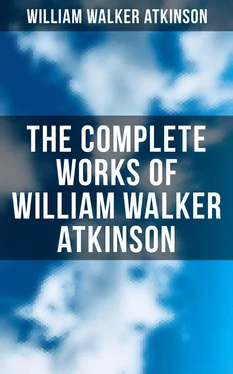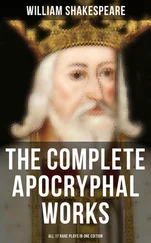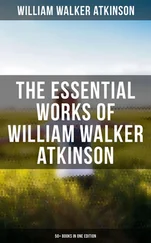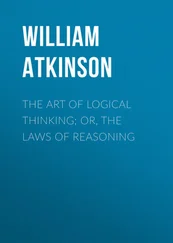The third class of syllogisms, known as The Disjunctive Syllogism , is the exception to the law which holds that all good syllogisms must fit in and come under the Rules of the Syllogism, as stated in the preceding chapter. Not only does it refuse to obey these Rules, but it fails to resemble the ordinary syllogism in many ways. As Jevons says: "It would be a great mistake to suppose that all good logical arguments must obey the rules of the syllogism, which we have been considering. Only those arguments which connect two terms together by means of a middle term, and are therefore syllogisms, need obey these rules. A great many of the arguments which we daily use are of this nature; but there are a great many other kinds of arguments, some of which have never been understood by logicians until recent years. One important kind of argument is known as the Disjunctive Syllogism, though it does not obey the rules of the syllogism, or in any way resemble syllogisms."
The Disjunctive Syllogism is one having a disjunctive proposition in its major premise. The disjunctive proposition also appears in the conclusion when the disjunction in the major premise happens to contain more than two terms. A disjunctive proposition, we have seen, is one which possesses alternative predicates for the subject in which the conjunction " or " (sometimes accompanied by " either ") appears. As for instance: "Lightning is sheet or forked;" or, "Arches are either round or pointed;" or, "Angles are either obtuse, or right angled, or acute." The different things joined together by "or" are called Alternatives, the term indicating that we may choose between the things, and that if one will not answer our purpose we may take the other, or one of the others if there be more than one other .
The Rule regarding the Use of Disjunctive Syllogisms is that: "If one or more alternatives be denied, the rest may still be affirmed." Thus if we say that "A is B or C," or that "A is either B or C," we may deny the B but still affirm the C. Some authorities also hold that "If we affirm one alternative, we must deny the remainder," but this view is vigorously disputed by other authorities. It would seem to be a valid rule in cases where the term "either" appears as: "A is either B or C," because there seems to be an implication that one or the other alone can be true. But in cases like: "A is B or C," there may be a possibility of both being true . Jevons takes this latter view, giving as an example the proposition: "A Magistrate is a Justice-of-the-Peace, a Mayor, or a Stipendiary Magistrate," but it does not follow that one who is a Justice-of-the-Peace may not be at the same time a Mayor. He states: "After affirming one alternative we can only deny the others if there be such a difference between them that they could not be true at the same time ." It would seem that both contentions are at the same time true, the example given by Jevons illustrating his contention, and the proposition "The prisoner is either guilty or innocent" illustrating the contentions of the other side.
A Dilemma is a conditional syllogism whose Major Premise presents some sort of alternative. Whately defines it as: "A conditional syllogism with two or more antecedents in the major, and a disjunctive minor." There being two mutually exclusive propositions in the Major Premise, the reasoner is compelled to admit one or the other, and is then caught between "the two horns of the dilemma."
CHAPTER XVIII.
REASONING BY ANALOGY
Table of Content
What is called Reasoning by Analogy is one of the most elementary forms of reasoning, and the one which the majority of us most frequently employ. It is a primitive form of hasty generalization evidencing in the natural expectation that "things will happen as they have happened before in like circumstances." The term as used in logic has been defined as "Resemblance of relations; Resemblances of any kind on which an argument falling short of induction may be founded." Brooks says: "Analogy is that process of thought by which we infer that if two things resemble each other in one or more particulars, they will resemble each other in some other particular."
Jevons states the Rule for Reasoning by Analogy , as follows: "If two or more things resemble each other in many points, they will probably resemble each other also in more points." Others have stated the same principle as follows: "When one thing resembles another in known particulars, it will resemble it also in the unknown;" and "If two things agree in several particulars, they will also agree in other particulars."
There is a difference between generalization by induction, and by analogy. In inductive generalization the rule is: "What is true of the many is true of all;" while the rule of analogy is: "things that have some things in common have other things in common." As Jevons aptly remarks: "Reasoning by Analogy differs only in degree from that kind of reasoning called 'Generalization.' When many things resemble each other in a few properties , we argue about them by Generalization. When a few things resemble each other in many properties , it is a case of analogy." Illustrating Analogy, we may say that if in A we find the qualities, attributes or properties called a , b , c , d , e , f , g , respectively, and if we find that in B the qualities, etc., called a , b , c , d , e , respectively, are present, then we may reason by analogy that the qualities f and g must also belong to B.
Brooks says of this form of reasoning: "This principle is in constant application in ordinary life and in science. A physician, in visiting a patient, says this disease corresponds in several particulars with typhoid fever, hence it will correspond in all particulars, and is typhoid fever. So, when the geologist discovers a fossil animal with large, strong, blunt claws, he infers that it procured its food by scratching or burrowing in the earth. It was by analogy that Dr. Buckland constructed an animal from a few fossil bones, and when subsequently the bones of the entire animal were discovered, his construction was found to be correct." Halleck says: "In argument or reasoning we are much aided by the habit of searching for hidden resemblances.... The detection of such a relation cultivates thought. If we are to succeed in argument, we must develop what some call a sixth sense of such relations.... The study of poetry may be made very serviceable in detecting analogies and cultivating the reasoning powers. When the poet brings clearly to mind the change due to death, using as an illustration the caterpillar body transformed into the butterfly spirit, moving with winged ease over flowering meadows, he is cultivating our apprehension of relations, none the less valuable because they are beautiful."
But the student must be on guard against the deceptive conclusions sometimes arising from Reasoning by Analogy. As Jevons says: "In many cases Reasoning by Analogy is found to be a very uncertain guide. In some cases unfortunate mistakes are made. Children are sometimes killed by gathering and eating poisonous berries, wrongly inferring that they can be eaten, because other berries, of a somewhat similar appearance, have been found agreeable and harmless. Poisonous toadstools are occasionally mistaken for mushrooms, especially by people not accustomed to gathering them. In Norway mushrooms are seldom seen, and are not eaten; but when I once found a few there and had them cooked at an inn, I was amused by the people of the inn, who went and collected toadstools and wanted me to eat them also. This was clearly a case of mistaken reasoning by analogy. Even brute animals reason in the same way in some degree. The beaten dog fears every stick, and there are few dogs which will not run away when you pretend to pick up a stone, even if there be no stone to pick up." Halleck says: "Many false analogies are manufactured, and it is excellent thought training to expose them. The majority of people think so little that they swallow these false analogies just as newly fledged robins swallow small stones dropped into their open mouths.... This tendency to think as others do must be resisted somewhere along the line, or there can be no progress." Brooks says: "The argument from Analogy is plausible, but often deceptive. Thus to infer that since American swans are white, the Australian swan is white, gives a false conclusion, for it is really black. So to infer that because John Smith has a red nose and is a drunkard, then Henry Jones who also has a red nose is also a drunkard, would be a dangerous inference.... Conclusions of this kind drawn from analogy are frequently fallacious."
Читать дальше












